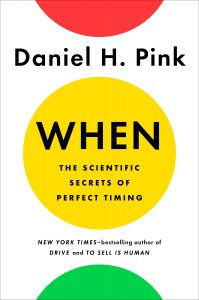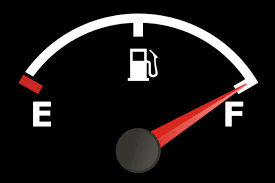Hidden Patterns of Everyday Life
- Payton L. Hobbs

- Mar 26, 2019
- 3 min read
Updated: Mar 27, 2019

Time isn't the main thing. It's the only thing. - Miles Davis
Daniel Pink opens his latest book with the Miles Davis quote above. It's a simple, yet powerful reminder that leaders need to spend time considering the concept of when just as much as they consider what, how, who, and why.
In When: The Scientific Secrets of Perfect Timing, Pink reviews the latest research on timing, synthesizes the data through narrative stories, and shares actionable takeaways through a Time Hacker's Handbook at the end of each chapter. This post is the first in a series of three, and will provide an overview of the findings in Part 1: The Day.
Hidden Patterns in Our Everyday Lives
Every leader is a unique individual and we all don't experience the day in precisely the same way. There is a pattern that exists in all our lives, and that pattern differs for each leader depending on their own personal chronotype or pattern of circadian rhythms. The pattern includes a peak, trough, and recovery stage, and this pattern impacts our sleep, focus, mood, and so much more.
When we understand and plan for the patterns in our lives, we have greater potential to increase productivity, energy, and overall well-being throughout the day for ourselves and our teams. Our goal is to align our type, task, and time.
Step 1: Figure out your type
Your chronotype is determined by when you naturally go to sleep, wake up, and the middle of those two times.
Larks have a midpoint of 12:00 a.m.-3:00 a.m. (about 14% of us)
Third Birds have a midpoint of 3:30 a.m.-5:30 a.m. (about 65% of us)
Owls have a midpoint of 6:00 a.m.-12:00 p.m. (about 21% of us)
Step 2: Understand your task
The best time to perform a particular task depends on the nature of that task. This makes it important to understand what the task will require mentally, emotionally, and physically.
Analytic tasks will require sharpness, vigilance, and focus to keep out distractions, whereas insight tasks require less inhibitions and resolve in order to fuel creativity and innovation. Routine tasks are more mundane and repetitive and require less mental and physical energy.
Step 3: Select the appropriate time
About 80% of us fall into the category of Larks or Third Birds and flow through our day with a peak, trough, recovery pattern. Meaning, the mornings are our high points, mid-day is our dip, and we rebound in the late afternoon and evening.
The other 20% who are Owls, flow through the stages in the reverse order of rebound, trough, and peak. They have their high point in the late afternoon/evening, dip in the middle of the day, and rebound in the morning.
The specific times for these stages will vary for each individual, so it is helpful to track your mood and energy levels for a week to determine the exact peak, trough,and recovery times.
Analytic tasks should be planned during your Peak. This is when executive functioning is enhanced and we are best able to concentrate. Don't let mundane tasks creep into this time period and waste this optimal time.
Insight tasks should be planned for your Recovery. This is when some of our mental guards are down and we are more open-minded and creative. This is a good time to brainstorm new projects and innovative ideas.
Now let's talk about the Trough...
Nobody is very productive during this time period of the day and this is why breaks and lunch become essential.
Research on the most productive performers supports the importance of breaks. The highest performers work for 52 minutes and then break for 17 minutes.
Here are some tips Pink provides on breaks:
Multiple micro-breaks are also effective. Stand up and walk around for 5 minutes every hour to boost energy levels, sharpen focus, and improve mood throughout the day
Social breaks will increase the benefits when you share and discuss something other than work with your colleagues. Connecting with others will reduce stress and conflict on teams.
Going outside for breaks replenishes us the most. Nature has a powerful effect on our hearts and minds.
Breaks are most effective when they include autonomy and detachment. Fully detaching, psychologically and physically, ensures energy resources are not being pulled back into work.
One major finding in Part 1 is that our cognitive abilities do not remain static over the course of the day. They change in a regular, foreseeable pattern and the fluctuations can be extreme throughout the day.
Leaders who want to experience joy and success for themselves and their teams should spend time exploring these patterns and considering the impact of timing on their daily lives.
Next Post Coming Soon....Part 2: Beginnings, Endings, and In Between




Comments